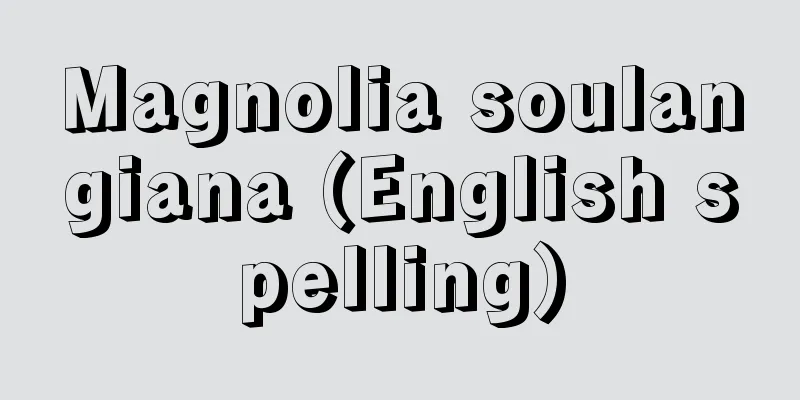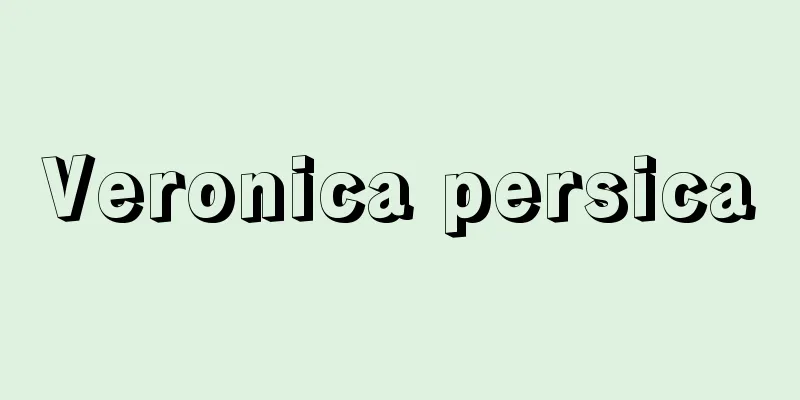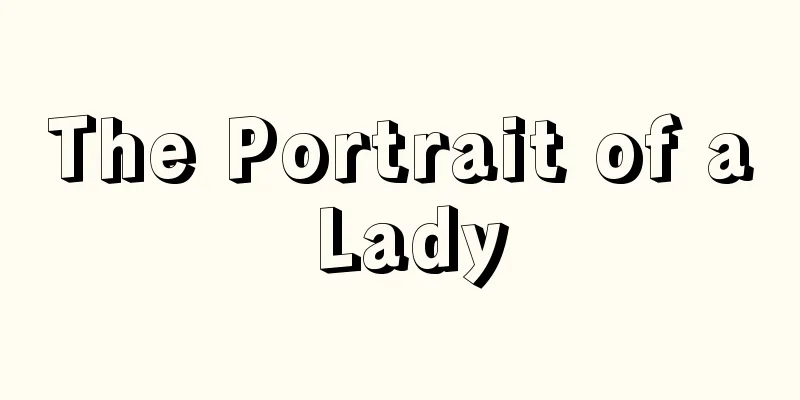Abortion - datai (English spelling)

|
It refers to the artificial termination of a pregnancy prior to the natural birth stage and the expulsion of the fetus developing in the uterus. Therefore, it includes all induced abortions, but in Japan's criminal code, induced abortions performed by doctors based on the Maternal Protection Act and surgery for ectopic pregnancies performed as an emergency escape are recognized as legitimate. In other words, it only refers to illegal abortions, and the killing of a fetus for the purpose of abortion is also included in abortion. [Kamata Hisako] FolkloreThe Konjaku Monogatari (early 12th century) contains a passage about taking poison as a method of abortion, which shows that artificial abortion was already practiced in the Heian period, and its history is long. However, many cases have been recorded since the Edo period. In his Agricultural Policy Book, Sato Nobuhiro, an agricultural policy scholar, wrote that farmers sometimes performed abortions by stabbing themselves with a poison needle, and that it was unavoidable due to poverty. Although the leaders of the time took notice of this custom as a population policy or economic policy, few of them treated it as a moral issue. Of course, there were books in the Edo period that warned against this custom. In 1842 (Tenpo 13), the shogunate issued a ban on abortion, but this was limited to the city of Edo and was not strict nationwide. The number of gynecologists, including those from the Nakajo school, increased in the cities of Kyoto and Edo, and abortion drugs were also smuggled in. The population living in a limited area was naturally fixed, and at that time, when effective contraception was unknown, abortion and infanticide (killing a child after giving birth) were even considered an implicit form of population control. In December 1868 (Meiji 1), the Meiji government issued a decree cracking down on midwives' ability to perform abortions, in an attempt to break with this custom that had existed since the Edo period. However, abortion remained an open secret and a nationwide custom until the Eugenic Protection Law (the current Maternal Protection Law) was enacted in 1948 (Showa 23). Today, all legal abortions are performed by doctors, but methods that have been handed down in various regions include (1) inserting a foreign object such as a poisonous plant to induce a miscarriage, (2) drinking a decoction of a poisonous plant, (3) extreme exercise, and (4) praying to gods and Buddhas. The names for these methods vary from "orosu" (the name for the method) to "okaeshi" (the notion that the fetus should be returned to its previous life) and "modos" (the name for the concept that the fetus should be returned to its previous life). There was also the idea that if the procedure was performed before conception, there would be no guilt felt because it was before the fetus was recognized as a human being. The basis for abortion seems to be the Japanese view of the soul, which believes that the human soul comes and goes, and that even if it is returned to its previous life, it can be reborn into this world if necessary. [Kamata Hisako] [Reference] | | |Source: Shogakukan Encyclopedia Nipponica About Encyclopedia Nipponica Information | Legend |
|
自然の分娩(ぶんべん)期に先だって人工的に妊娠を中絶し、子宮内で発育中の胎児を排出させることをいう。したがって、すべての人工妊娠中絶が含まれるわけであるが、日本の刑法では、母体保護法に基づき医師が行う人工妊娠中絶や、緊急避難行為として行う子宮外妊娠の手術などは、正当行為と認められている。すなわち、非合法的な妊娠中絶だけをさしており、妊娠中絶を目的とした胎児の殺害も堕胎に含まれる。 [鎌田久子] 民俗『今昔(こんじゃく)物語』(12世紀初め)に、流産の術として毒を服すという文があることは、平安時代すでに人工妊娠中絶が行われていたことを示しており、その歴史は古い。しかし事例が数多く残されているのは、江戸時代以降である。農政学者佐藤信淵(のぶひろ)は『農政本論』に、農民が毒針を刺して堕胎することがあったと述べて、貧窮ゆえにやむをえないとしている。当時の為政者は、この風習を人口政策、経済政策として注目することはあっても、道義上の問題として扱っているものは少ない。もちろん江戸時代にもこの風(ふう)を戒めた書物はある。1842年(天保13)幕府は堕胎の禁令を出しているが、これとて江戸市中に限られ、全国的には厳しいものではなかった。京都・江戸の町なかには、中条(なかじょう)流をはじめとした婦人科医の存在も増加し、子おろし(中絶)用の薬も密売されていた。限られた土地に住む人口はおのずと決まっており、効果的な避妊法もわからない当時としては、堕胎・間引(まびき)(出産してから始末すること)は、暗黙裏の人口調整とすらなっていたのである。 明治政府は、1868年(明治1)12月、産婆への堕胎取締りを布告して、江戸時代からの慣習を打破しようとしてきたが、1948年(昭和23)優生保護法(現母体保護法)が成立するまで、堕胎は公然の秘密として、全国的な慣習となって存在したのである。 今日では合法的な妊娠中絶は、すべて医師により行われているが、各地に伝承されていた方法をみると、(1)毒性の植物など異物を挿入して流産を促す、(2)毒性の植物を煎(せん)じて飲む、(3)過激な運動、(4)神仏に祈願、などが行われていた。名称も、その方法をよんだオロスとか、観念として抱いている、胎児を前世に返すというオカエシ、モドスなどの方言がある。着帯以前に処置すれば、人間として認知する以前であるから罪の意識を感じないですむという考え方もあった。堕胎が行われてきた根底には、人間の霊魂は去来するものであり、前世に返しても、また必要ならばこの世に生まれてくることができると信じた日本人の霊魂観が存在するのであろう。 [鎌田久子] [参照項目] | | |出典 小学館 日本大百科全書(ニッポニカ)日本大百科全書(ニッポニカ)について 情報 | 凡例 |
Recommend
Allowed country - Kyokoku
Abandon yourself to your country. See the entry fo...
Nobutsuna Okochi - The beast of Okochi
...A Shogunate councilor in the early Edo period....
Basic wage - Kihonchingin
…Wages in Japan had become extremely complicated ...
Equatorial conjunction - Equatorial conjunction
Please see the "Axial Bond" page. Sourc...
Chain carrier
...A reaction that includes several successive re...
Heliant - Heliant (English spelling)
This gospel of unknown authorship is said to be t...
Nucleophile - Nucleophile
A chemical species that donates or shares electron...
Emperor Zhao (English spelling)
94th - 74th China, former Han Liu Fuling, Emperor ...
Fig - Fig
A deciduous tree of the mulberry family native to ...
Moltke, Helmuth Karl Bernhard, Graf von
Born: October 26, 1800, Parchim, Mecklenburg Died ...
Tribunal Administratif (English)
…The reform of the court system in December 1958 ...
semipalmate
...only in the Pelecaniformes), palmate (the firs...
Nyasa
…A large lake in southeastern Africa, it had long...
Jean Henry Dunant
Founder of the Red Cross. Born in Geneva, Switzer...
Top dressing - Top dressing
Fertilizer applied during the growth stage of a p...









